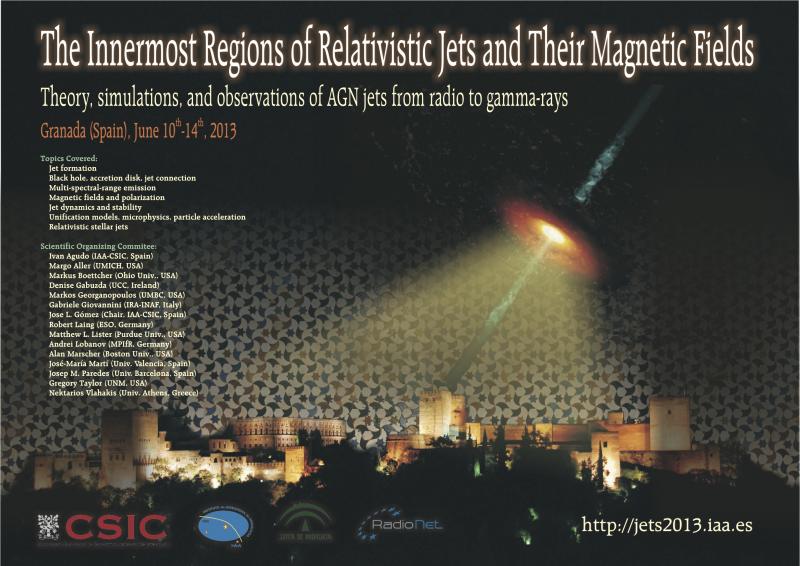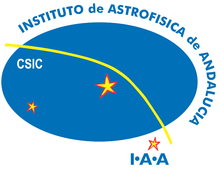The Innermost Regions of Relativistic Jets and Their Magnetic Fields. Granada (Spain). June 10th-14th, 2013.
Haga, Takafumi
The core shift measurements for two-sided jets affected by Free-Free absorption using VLBA.
Author list: Takafumi Haga, Akihiro Doi, Yasuhiro Murata, Hiroshi Sudou, Seiji Kameno, Kazuhiro Hada,Hiroshi Nagai
A radio core represents the peak of intensity in VLBI images and is located at the base of jets. It appears at different positions depending on frequencies. This is known as “core shift”, caused by absorption of the core emission. The position of the central engine in an AGN can be estimated accurately by measuring the core shift with multifrequency and phase-referencing observations. We observed NGC 4261 using the VLBA at seven frequencies. This source is a nearby FR-I type radio galaxy at the distance of 30 Mpc and has prominent two-sided jets. We measured the core shifts in not only approaching side but also counter side of the jets. The positions of core at infinity of frequency in both side indicated to come close asymptotically to the same position, which was separated by 82±16 μas from 43 GHz core position, corresponding to 310±60Rs (Schwarzschild radius). This source also has another feature that there is a region affected by free-free absorption (FFA) in the vicinity of the core and toward the counter jet. Moreover, we also found the same feature in other three sources, 3C 84, Cen A and Cyg A, which are also nearby galaxies with two-sided jets and with an indication of the FFA regions. We measured the core shifts in these sources by using same technique as NGC 4261 in order to study the structure of circumnuclear plasma, to determine the position of the central engine and to test core shifts due to FFA. We will also report these latest results about new observations.




